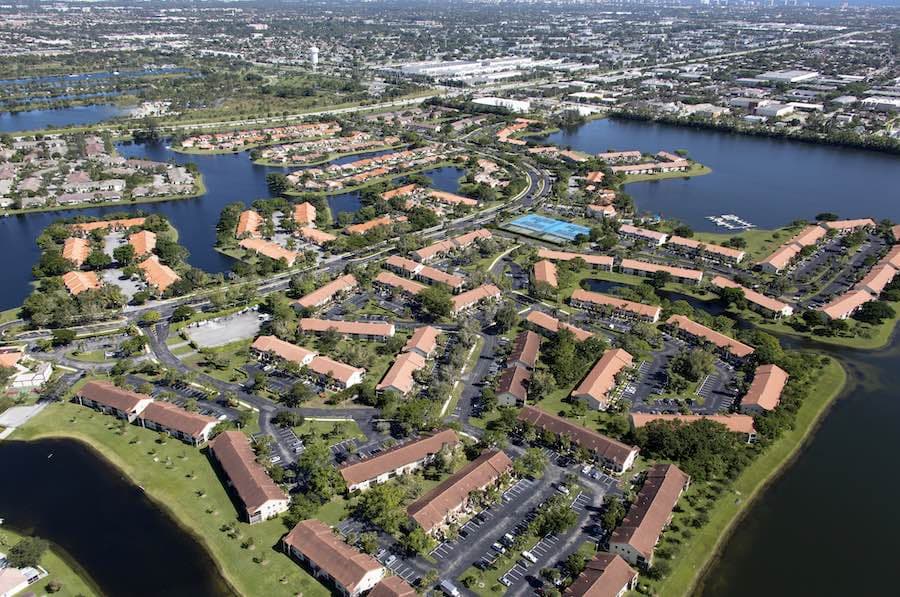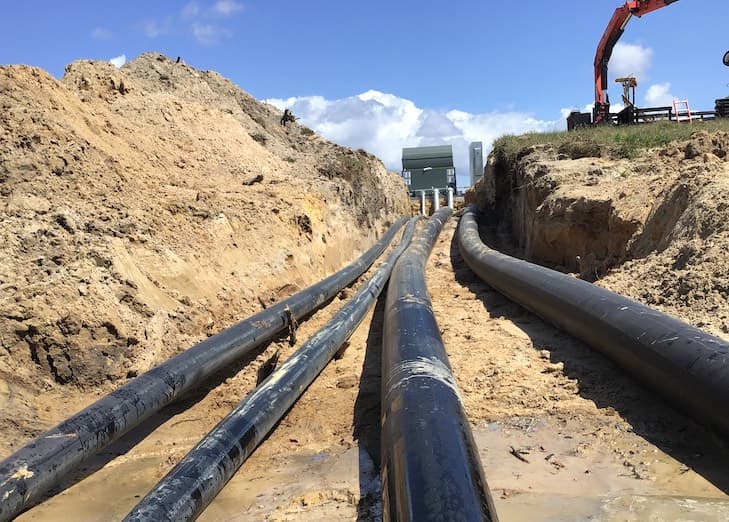
The increasing sophistication of smart irrigation systems is clearly a hugely positive development. It has created a situation in which a system installed across a space as large as a housing development, golf course or even a small city can gather, aggregate and record data on its own operation in real time, flagging up issues and making it easier to deal with problems before they become entrenched and damaging.

The downside of this, however, is that it can be tempting to take a less responsive approach to the management of irrigation, leaving the system to run itself and only taking action when things go badly wrong. By this stage, of course, you could be looking at full-scale replacement of an entire system, something which is expensive, time consuming and disruptive.
Recent advances in pump station technology aside, pumps can still burn out for a variety of reasons, and knowing what those reasons are likely to be means being able to tackle the problem at source rather than dealing with two equally unappealing scenarios; the pumps you use need to be replaced on a regular basis, or a pump fails in such a way that it manages to damage the wider irrigation system at the same time.
Whatever the source, whether a lake or a well, the irony is that as smart irrigation systems have become more advanced the damage that can be done to sensitive and complex electronic systems by the mechanical failure of a single pump has increased. This means it's more vital than ever to understand why pumps might fail and take proactive measures to stop it happening.
The pressure switch which helps to control the pump is a mechanical part, and like all mechanical parts, it can wear and malfunction over time. If the pressure switch isn’t working properly it could lead to the pump being switched on too often or for too long, either one of which could contribute to the motor burning out.
Another potential problem arising from a malfunctioning pressure switch is that it can allow the pressure being generated by the pump to climb too high. If this happens the tank and pipes your system depends upon – which have all been designed with a specific range of water pressure in mind – could end up becoming cracked or broken. The fact that water is then leaking across a system means that not only are you losing a valuable resource, but also that the pump will carry on operating at the same elevated pressure until it inevitably burns out.
Cracked or leaking pipes alone, whether or not they have been damaged by a malfunctioning pressure switch, can lead to the pump being damaged by dint of the fact that a pump supplying water to a pressurized tank will have to work harder if some of that water is being lost en route.
One of the key components of a well-water pumping system is the air bladder inside the well tank. If this cracks, splits or deteriorates water can enter what should be an air-filled, water tight space. The amount of space within your well tank needs to be sufficient for large amounts of water to fill it at any given time.
If there is less air in the tank – due to a malfunctioning air bladder - then only a small amount of water can be pumped into the tank before maximum pressure is achieved and the pump switches off. Too much water and not enough air in the tank will lead to a phenomenon known as ‘short cycling’, during which the pump switches on repeatedly for small bursts of pumping. Working in this way can lead very quickly to the pump burning out.
The problems that lead to pumps burning out far more often than they should, have thus far focused on the irrigation system and the components that make up that system. Another common source of problems lies beyond the fabric of the system itself and relates to the water being supplied to the pump. If this supply of water drops below the amount needed for efficient pumping it is possible for cavitation to occur.
Cavitation is the process by which air bubbles are rapidly created and then burst multiple times in the water passing through the pump. The force of the bubbles is sufficient to cause cumulative mechanical damage to the components of the pump – metal components such as the impeller could become pitted with small holes and the pump seals could suffer damage.
The signs to look out for when checking for the possibility of cavitation impacting your pump(s) include excessive noise and vibration when operating, higher than usual levels of power consumption, failure of the seals and bearing and excessive corrosion of the impeller. The causes of the low water supply which leads to issues like cavitation could include any of the following:

In terms of intake from a lake or other body of water, one useful tip is to design the intake so the speed of the water being drawn into the strainer on the end of the intake pipe is relatively slow. This will make it more likely that debris in the water simply floats past the intake rather than being sucked in and causing problems.
In some cases, the underperformance of a pump may simply indicate that the specification for the pump was either wrong when the system was installed or has become unsuitable as circumstances have changed.
Some systems, for example, are supplied by a municipal water source and have a booster pump and backflow system in place. The incoming pressure of the water from the source may have changed over the years since it was installed, leading to a situation in which everything from the specification of the pumping station to the size and design of the pipes used to shift the water needs to be examined and re-evaluated.
Another aspect of the system which should be evaluated before it causes problems is the size of the pipes used, and whether a looped mainline pipe is in place. Our case studies highlight many examples in which an educated evaluation of an existing irrigation system led to solutions such as replacing outdated and unsuited pumping stations with fewer but more well-suited pumping stations, and tweaking issues such as the water intake by lifting it above the bottom of the lake which supplies the water. Pre-emptively managing small details such as the water intake can pick up issues before they have the chance to become truly damaging.
The same principle applies to tracking repairs. When dealing with a large system that requires ongoing minor repairs it can be tempting to simply let the technical team get on with their job as long as the flow of irrigation continues.
The type and frequency of the repairs that need to be undertaken could signal deep seated problems in the system. And if you’ve taken over control of an irrigation system you should ask to see logs on all the repairs which have been undertaken in the past. If the main lines of the system are manufactured from PVC, for example, you can expect the pipes themselves to have a life expectancy of more than 50 years. However, studies have shown that PVC has a failure rating of one in 48,650 events, compared to the failure rating of HDPE, which is one in 10,000,000. Here's an article we wrote about the differences between PVC and HDPE used for irrigation pipes.

If repairs to the pipes have been carried out on a regular basis then it is likely to point to problems with the fittings and valves more than the pipes themselves, and this in turn could signal poor water quality. The good news is that in some cases, not all pipes have to be replaced - some strategic replacements (for example to the mainline only) could be done - with transformative results.
Even if it's clear your irrigation system has been neglected or possibly was never quite fit for purpose, it's not always inevitable that a wholescale replacement of the entire system is necessary - even when problems seem entrenched, and have been steadily building for years.
One of our clients needed a solution to correct pump system and irrigation problems, and to reduce ongoing costs to replace sod. They had 24 pump stations that were all operating inefficiently. Annual costs for simply keeping the system running and replacing sod - it was tough. Costs for repairs and water use ran high. Sprinkler heads constantly clogged during dry weather when suction lines pulled sand and sediment from the lake bottom. There were several problems to be dealt with and it was easy to see why making the decision to take this in hand was a big one. Once we'd carried out a complete investigation of the system and the problems, we were able to recommend a solution that didn't involve replacing all 24 pump stations with 24 new ones - we were able to replace them with just 10, very much more efficient stations - as well as carrying out work to ensure the mainline didn't keep breaking and reducing sod-replacement costs - saving the community up to $40,000 per year on this alone.
In some cases, applying a smart control system like Hoover Flowguard could make it possible to continue working with older pumping stations and pipework thanks to the fact that the flow of water through the system is much more carefully managed and monitored. Issues such as surge pressures and pump controls become easier to deal with, making pump burnout less likely and meaning that pumps only need to be replaced as and when they reach the end of a normal working lifespan.
The combination of control over the system and vigilance on the part of those in charge could create a situation in which day to day irrigation is maintained and optimized, while the wider system can be upgraded one pump and sprinkler zone at a time, in an affordable and convenient manner. What most of the advice we can give to those in charge of irrigation systems boils down to is to maintain vigilance, understand what the factors which can cause issues across an irrigation system are, and learn how to spot the earliest possible warning signs of those issues.